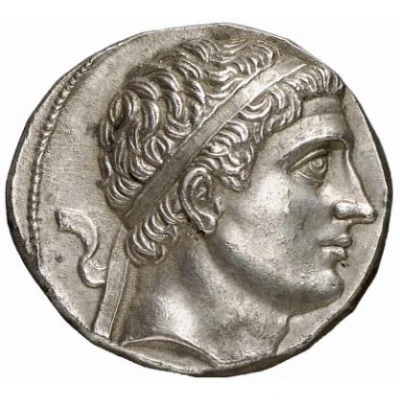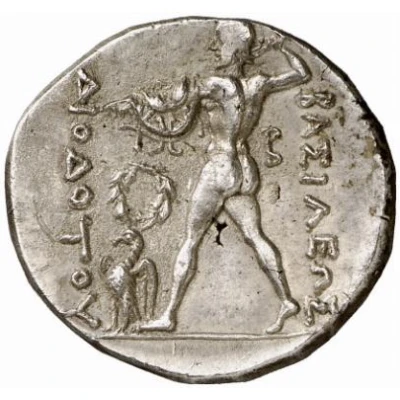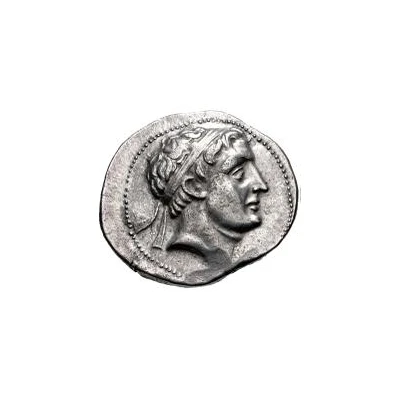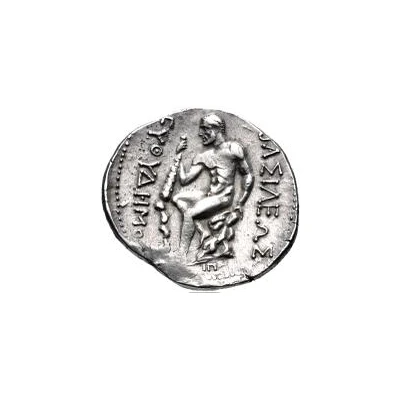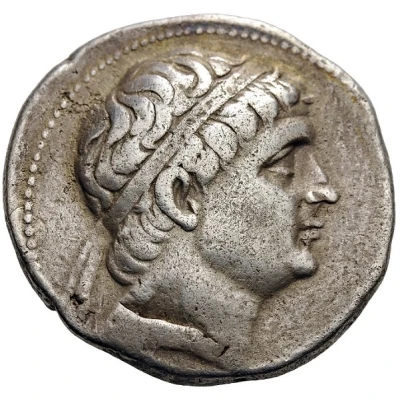
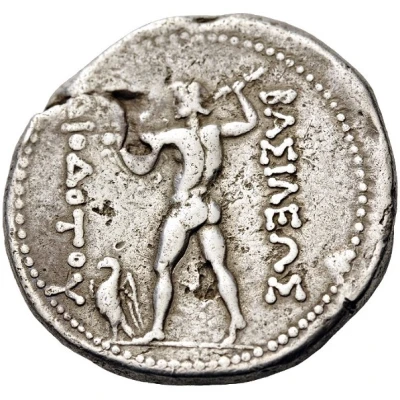

© Nomos AG
Tetradrachm - Diodotos II 235 BC - 225 BC
| Silver | 16.44 g | 27.0 mm |
| Issuer | Kings of Baktria |
|---|---|
| King | Diodotos II (ΔΔιόδοτος Θεός) (234 BC - 223 BC) |
| Type | Standard circulation coin |
| Years | 235 BC - 225 BC |
| Value | Tetradrachm (4) |
| Currency | Drachm (305-15BC) |
| Composition | Silver |
| Weight | 16.44 g |
| Diameter | 27.0 mm |
| Shape | Round (irregular) |
| Technique | Hammered |
| Demonetized | Yes |
| Updated | 2024-10-09 |
| Numista | N#194200 |
|---|---|
| Rarity index | 100% |
Reverse
Zeus striding left, hurling thunderbolt from his upraised right hand and with aegis over his outstretched left arm. To left, before his left foot, eagle standing left
Script: Greek
Lettering: ΒΑΣΙΛΕΩΣ ΔΙΟΔΟΤΟΥ
Translation: King Diodotos
Interesting fact
One interesting fact about the Tetradrachm - Diodotos II (235 BC - 225 BC) coin from Kings of Baktria is that it features a unique blend of Greek and Indian artistic styles. The coin's obverse side depicts a portrait of Diodotos II, while the reverse side shows a seated Zeus, a common deity in Greek mythology. However, the representation of Zeus on this coin is distinctly Indian in style, with a more relaxed and naturalistic posture, and an ornate throne that resembles Indian architectural designs. This fusion of artistic styles reflects the cultural exchange and blending that occurred during the Hellenistic period, where Greek and Indian influences came together to create something new and unique.
